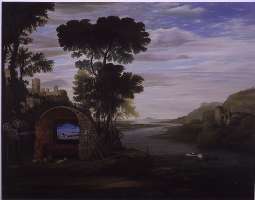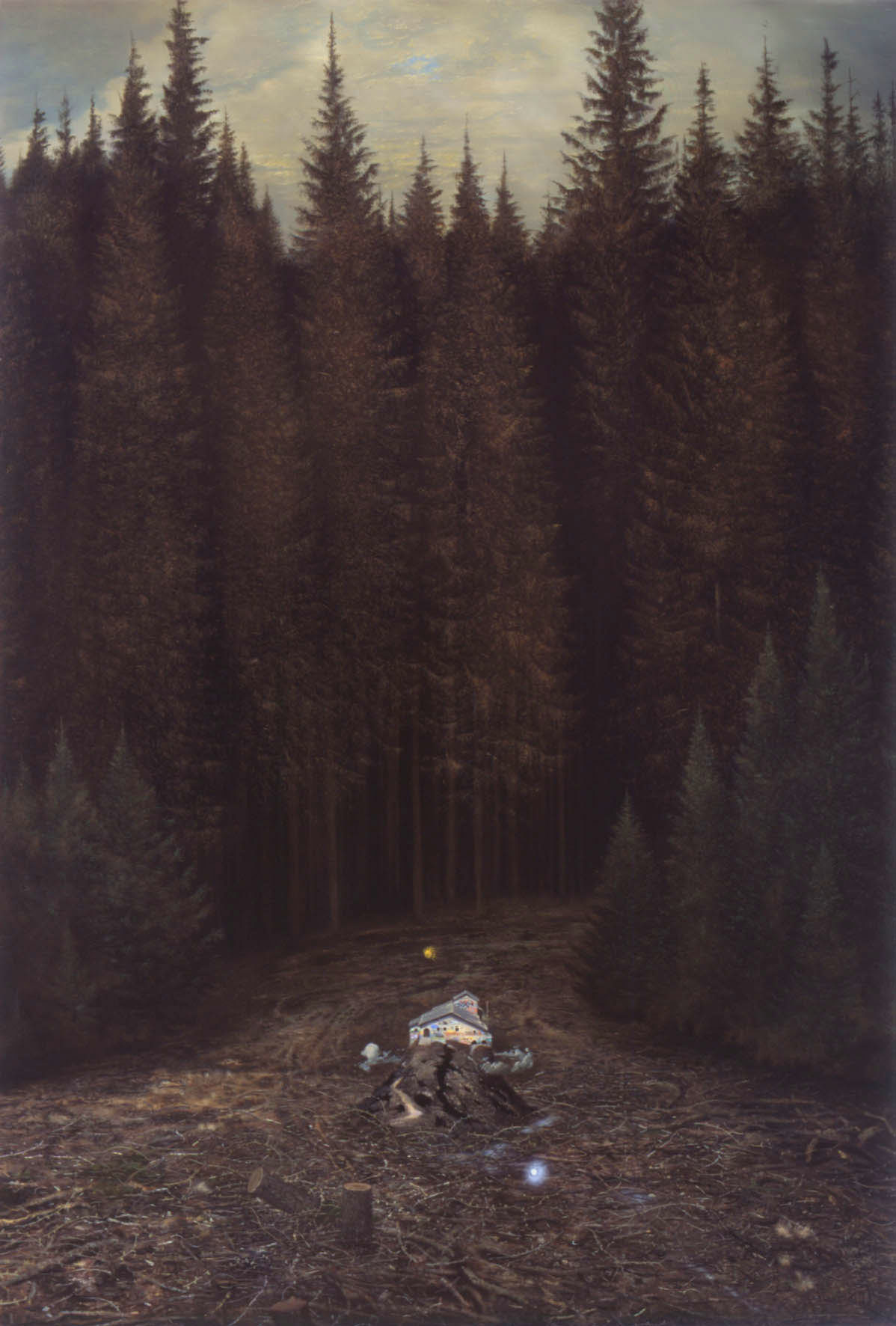

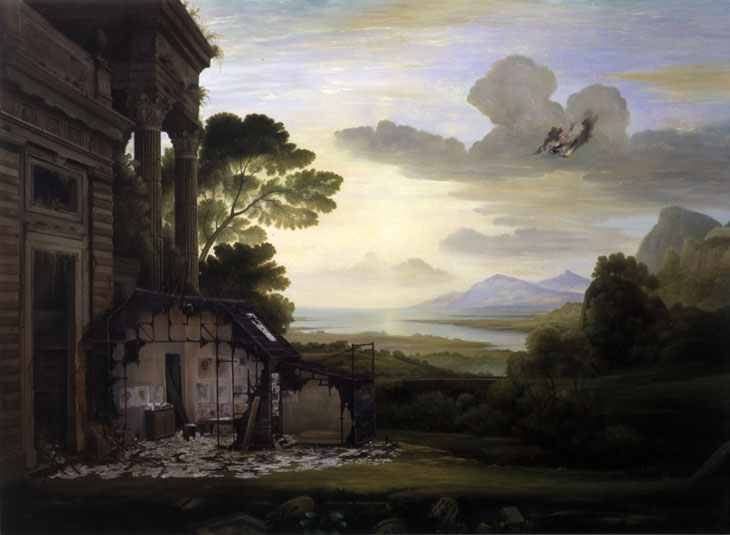
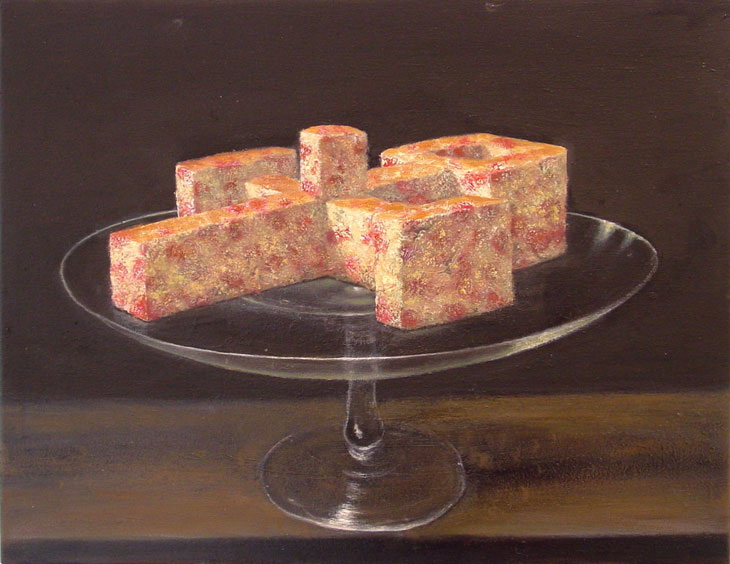
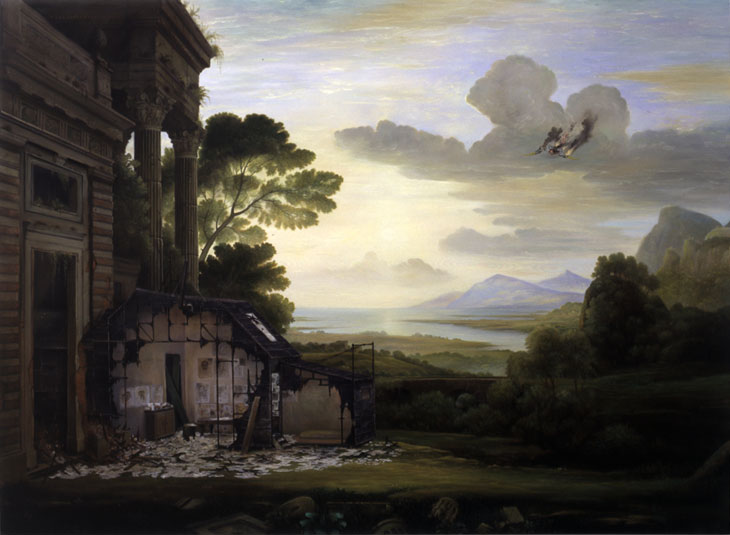
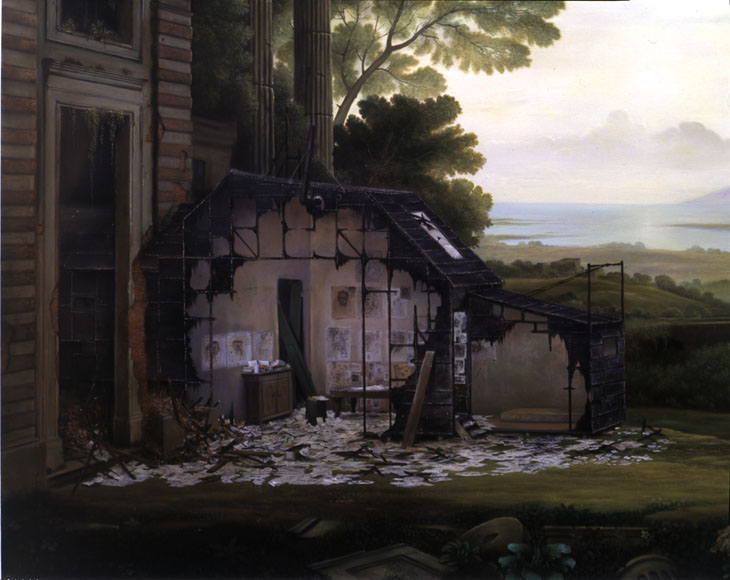

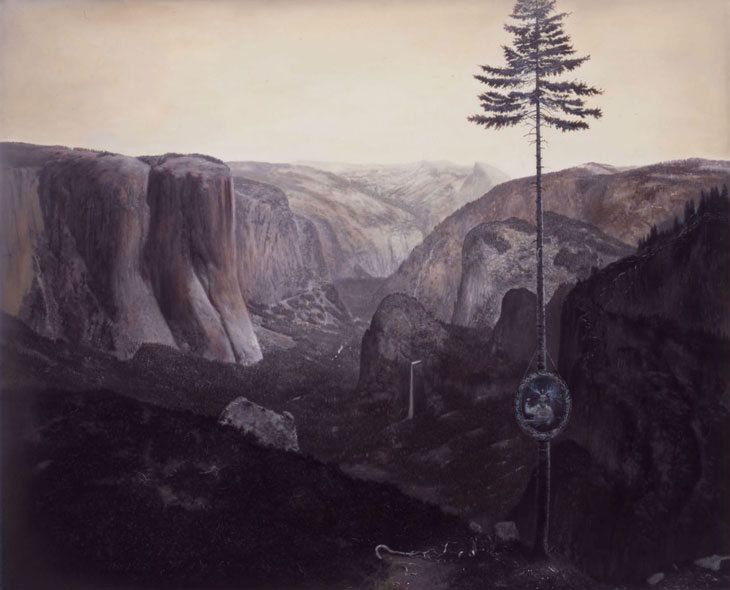
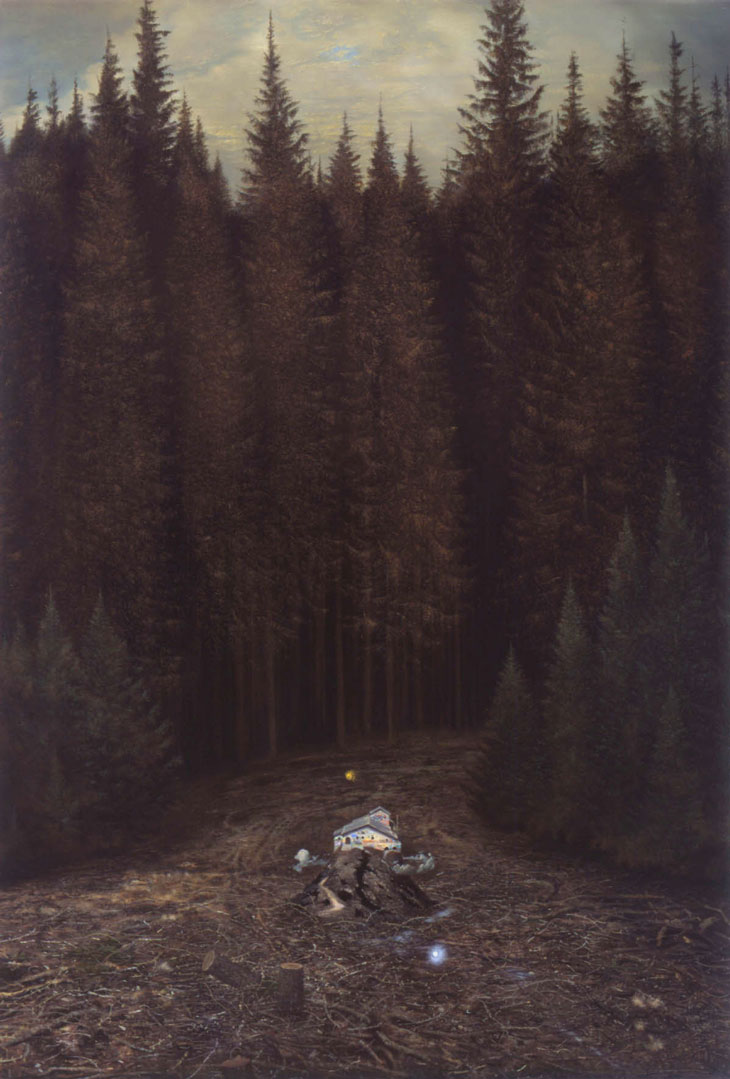
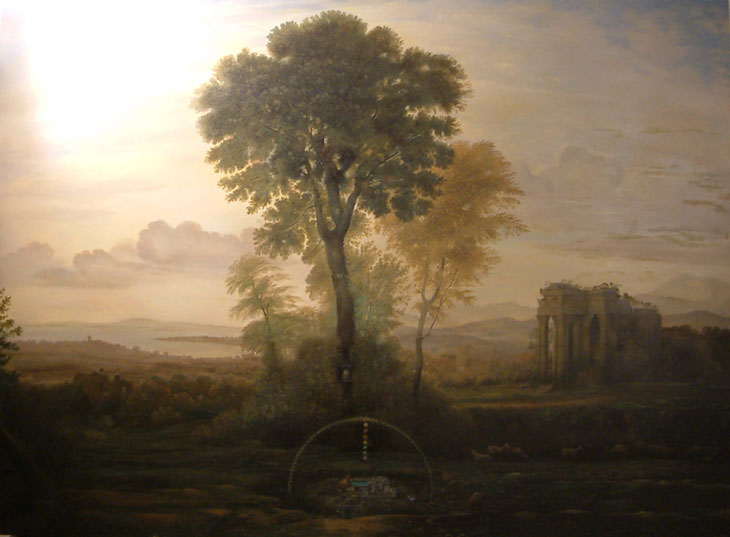
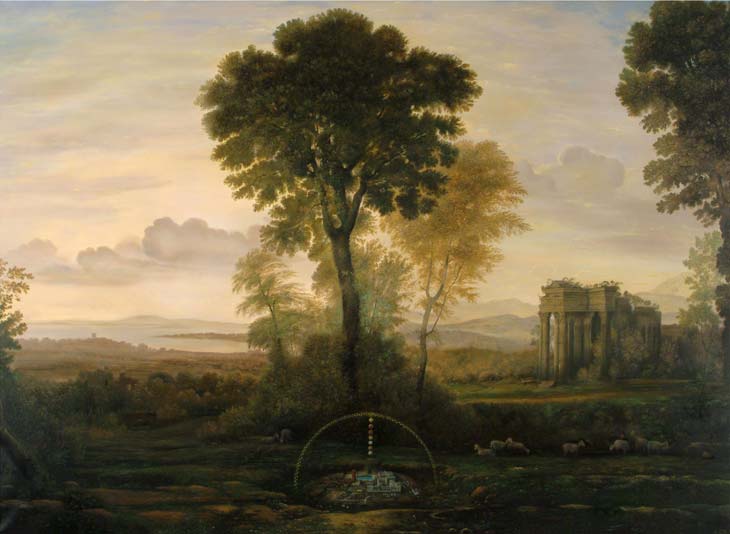
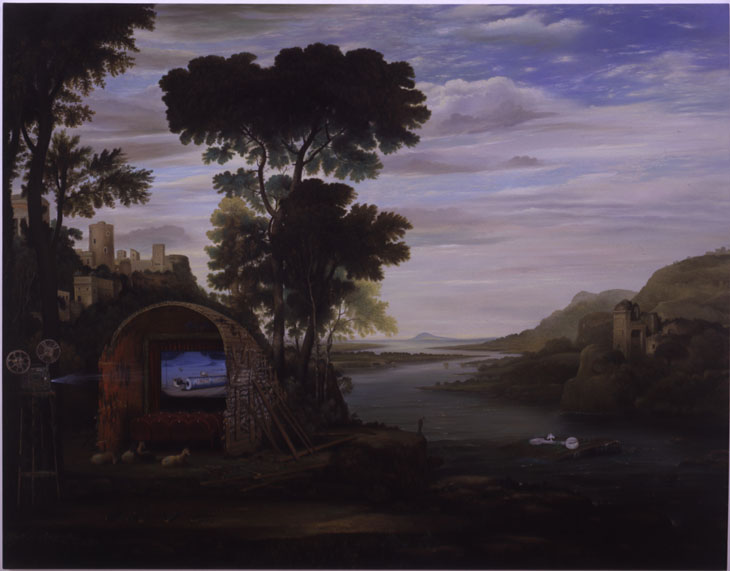
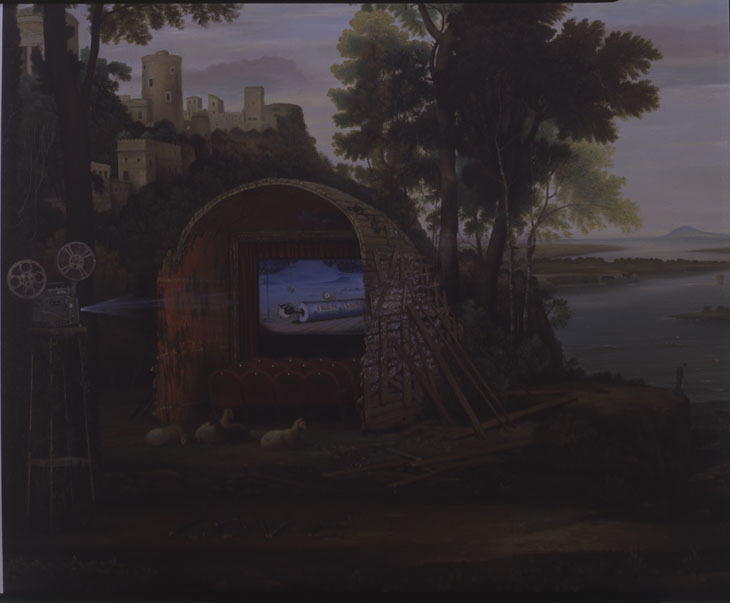
Ged Quinn
Using Gilbert Stuart and Rembrandt Peale’s iconic portrait of George Washington as a starting point, Quinn’s painting of the first American president takes a humorous turn towards the Freudian. Dad With Tits was amongst the first of a series of work dealing with portraiture and authority figures. Playing a semiotic game with the notion of ‘founding father’, Quinn conceives his portrait as something of an oedipal autopsy: a naked decaying corpse boasting a mumsy set of mams. Through the window a volcano, reminiscent of heroic landscapes by Frederic Edwin Church, explodes with both revolutionary and sexual innuendo. The bird perched on Dad’s shoulder is a device commonly used in early Christian art to represent the departing soul of the recently deceased.
Based on a image by pioneering 19th century landscape photographer Carleton Watkins, God Knows Where This Is lays bare the contradictions inherent in America’s idealist appropriation of sacred Native American hunting grounds to create its iconic national parks. Quinn employs the original photograph’s tonal qualities of light and dark to reproduce a vast canyon of ’wilderness’ stretching further than the eye can see. The harmony is shattered by an incongruous framed portrait, hanging from a single, lonesome pine; ’wearing’ the antlers of St. Hubert, the American poet and libertine Walt Whitman is portrayed in the moment of his fictional suicide, blowing his mind out with another symbol of American freedom, the Colt 45 handgun. This land of freedom and innocence, Quinn implies with no little vehement, is no more than a constructed illusion of false escape. Dwarfed by a bank of towering trees, in a scene reminiscent of the Northern European Romantic tradition, a tiny building stands in a wooded clearing. It is the Berghof, Hitler’s mountain retreat, transplanted from Berchtesgaden to Mount Purgatory, which rises up from the forest floor. The house has been daubed with graffiti, ’tagged’ with the words Urizon, Los, Luvah and Urthona, the four Zoas from William Blake’s unfinished 1797 poem of the same name. Quinn’s choice of this oblique reference to the ambiguous association of myth and Christianity, and the otherworldly, fairy-tale setting he has fashioned for a sickening reminder of an all-too-real real person, is intended to ask the question: what happens when myth replaces history? True Peace Will Prevail under the Rule is a contemporary reworking of Claude Lorrain’s 1666 Old Testament depiction of Jacob, Rachel and Leah at the Well. In the well, bathed in heavenly morning sun, Quinn has placed a serene image of Mount Carmel, home to a dissident religious community assaulted and eventually destroyed by the FBI in the Texan town of Waco in 1993. He plays with the idea of adopted identity, replacing Jacob, renamed Israel by God in The Book of Genesis, with David Koresh, the community’s leader formerly known as Vernon Howells, who took his constructed identity from the names of a Persian king and the Lamb of God. Suspended above the town hangs the image of a pre- Copernican universe, thought to have been centred around the earth, a motionless centre of concentric rotating spheres. Again based on a work by Claude, this time Landscape with the Arrival of Aeneas at Pallanteum from Anglesey Abbey, Quinn’s constructed composition questions the role of art as a vehicle for social improvement. Part of Aeneas’ ship has been recycled into a miniature cinema, complete with beaming projector, rows of red velvet seats and a scene from Tex Avery’s MGM classic Little Tinker. Bound into a raft and drifting listlessly in the nearby river, another part of the vessel that carried the Trojan hero on his journey through the Underworld bears a similarly precious cargo – the Discovery, that pioneering craft from Stanley Kubrick’s 1968 cult science fiction movie 2001: A Space Odyssey. Quinn leaves us contemplating another maze of complex references, some recognizable and some more obscure, which challenge conventional systems of pictorial decoding.
